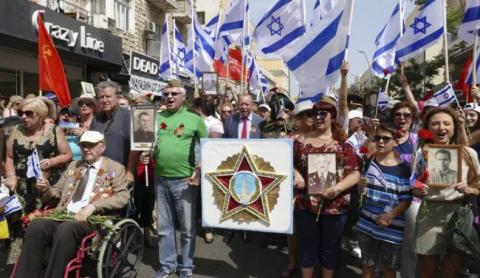Israeli-Russians celebrate WWII Victory Day
Paperny was born in the city of Chernigov in 1925. He joined the Red Army at the age of 16, served in the Communications Corps for four years, and took part — and was wounded — in the liberation of Vienna in 1945. In Israel, he became president of the Organization of Soldiers and Partisans Wounded in the War against the Nazis. In 2010, he and his former brothers in arms received Russian help to establish the Museum of Jewish Heroism during World War II in the city of Ashdod.
The little museum features hundreds of valuable and meaningful items, including the uniform of a soldier in the Red Army during the war, letters from the front, dining utensils, weapons and photos of young Jewish soldiers who fought in the Red Army, including Paperny. Dozens of Israeli school and student groups visit the museum every year, along with young people from overseas.
Some 20,000 veterans of World War II immigrated to Israel from the Soviet Union in the 1990s. Almost every family that arrived has or had someone who fought against the Nazis. Victory Day is an especially popular anniversary among Jews from the Soviet Union. They brought it to Israel with them. The first victory parade in Israel took place in Jerusalem on May 9, 1993, in keeping with a tradition from the Soviet Union and modern Russia (Europe and the United States celebrate the Victory Day on May 8).
At first, longtime Israelis watched in awe as elderly men and women decked out in Red Army uniforms and with dozens of medals on their chests marched past. The Israelis had no idea what was going on. The sun beat down on the veterans as they marched in formation, sang songs in Russian from that war and recalled the fierce battles, the horrors they had seen and the friends and family who died.
Ksenia Svetlova

